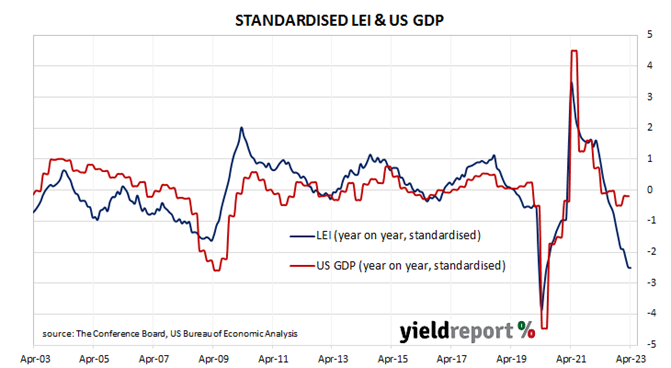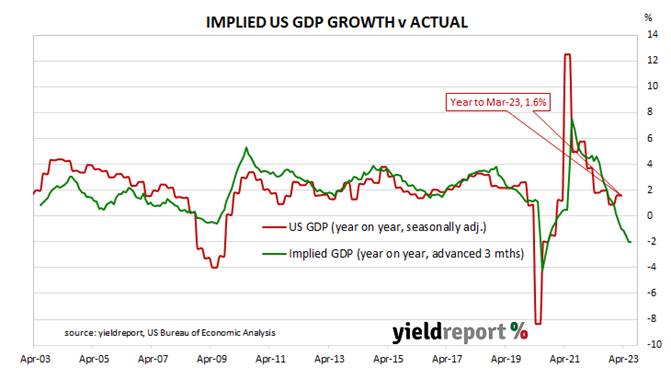Summary: Conference Board leading index down 0.6% in April, fall slightly worse than expected; CB: LEI continues to warn of economic downturn this year; regression analysis implies 2% contraction in year to July.
The Conference Board Leading Economic Index (LEI) is a composite index composed of ten sub-indices which are thought to be sensitive to changes in the US economy. The Conference Board describes it as an index which attempts to signal growth peaks and troughs; turning points in the index have historically occurred prior to changes in aggregate economic activity. Readings from March and April of 2020 signalled “a deep US recession” while subsequent readings indicated the US economy would recover rapidly. More recent readings have implied US GDP growth rates will turn negative sometime in 2023.
The latest reading of the LEI indicates it decreased by 0.6% in April. The result was slightly worse than the expected -0.5% but above March’s -1.2%.
“Weaknesses among underlying components were widespread but less so than in March’s reading, which resulted in a smaller decline,” said Justyna Zabinska-La Monica of The Conference Board. “Importantly, the LEI continues to warn of an economic downturn this year.
US Treasury bond yields rose noticeably on the day, especially at the short end of the yield curve. By the close of business, the 2-year Treasury yield had gained 11bps to 4.26%, the 10-year yield had added 7bps to 3.65% while the 30-year yield finished 4bps higher at 3.91%.
In terms of US Fed policy, expectations of lower federal funds rates in 2024 softened significantly. At the close of business, contracts implied the effective federal funds rate would average 5.125% in June, 4bps higher than the current spot rate, and then inch up to an average of 5.16% in July. September futures contracts implied a 5.115% average effective federal funds rate while May 2024 contracts implied 4.005%, 107bps less than the current rate.
Regression analysis suggests the latest reading implies a -2.0% year-on-year growth rate in July, unchanged from June’s revised figure.



